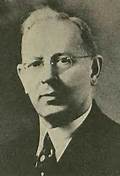How can we help these deserving students fulfill their postsecondary aspirations?
The October report is the second in a series of “Idaho at a Glance” policy briefs on Hispanics and education in Idaho. The first report was issued in 2011 and summarized the growing Hispanic student population, achievements in K-12, and the educational attainment of Idaho’s Hispanic students.
Geared and tailored for this audience, my new book will include specific guidance on Choosing a College → Explore Your Interests → Visit the Campus → Applying to College → Getting Ready as a Senior → Cost & Financial Aid → College Life → Success Stories → ;
Margie Gonzalez, the commission’s executive director, added the commission is committed to providing the most updated data on Idaho’s Hispanic community in order to raise public awareness of the major issues facing the state’s communities.
“Education continues to be our top priority, and we are thrilled to partner with the University of Idaho in releasing ‘Hispanics and Education II,’” Gonzalez said.Hispanic enrollment growth is outpacing non-Hispanic growth in Idaho’s public schools, colleges and universities. From 2000 to 2011 there was a 75 percent increase in enrollment of Hispanic students in K-12 schools, compared to an increase of 8 percent in non-Hispanic student enrollment. Hispanic student enrollment in four-year universities increased 118 percent, while non-Hispanic student enrollment increased 9 percent. Hispanic students make up 16 percent of K-12 public school enrollment and 6.5 percent of enrollment at Idaho’s public universities.
However, one barrier to higher education is the rising cost of tuition across the nation. According to the new report, almost all parents in Idaho, Hispanic and non-Hispanic alike, include grants and scholarships as part of their plan to pay for college — 96 percent and 88 percent, respectively. Unfortunately, state-funded, need-based aid in Idaho is very low: in 2008, only $63 was spent per undergraduate student, compared to $611 nationally. Most data in the new report come from the University of Idaho’s Micron STEM Education Research Initiative, a five-year study of science, technology, engineering and math (STEM) education in Idaho (www.uidaho.edu/research/stem/micronstemed). This report highlights results of surveys of seventh-and 10th-grade students and their parents as well as a general statewide survey.
“Providing rigorous STEM education is a key strategy for increasing access to good paying jobs for Idaho’s students, Hispanic and non-Hispanic alike,” according to Melinda Hamilton, director of the university’s STEM initiatives. By 2018, 90 percent of STEM jobs will require at least some postsecondary education. Annual wages for Idaho’s STEM occupations were roughly twice as high as for all other occupations in 2011.Because STEM occupations tend to have good benefits and opportunities for career growth, supporting students in subjects that prepare them for these occupations is important. Findings presented in the new report show that in seventh-grade, Hispanic students tend to have attitudes about math and science that are similar to those of their non-Hispanic peers.
However, by 10th grade, Hispanic students are less likely to say they like math and science, less comfortable asking questions in class, and less likely to feel they can get extra help in math or science outside of class time or at home. At the same time, Hispanic parents of 10th-graders are more than twice as likely as non-Hispanic parents to say they wish they had more time to be involved in their child’s education — 48 percent of Hispanic parents versus 19 percent of non-Hispanic parents. However, Hispanic parents are much more likely than non-Hispanic parents to say they lack the knowledge to help with math and science homework — 51 percent versus 26 percent for math, and 44 percent versus 13 percent for science. Understanding the influence of social, cultural and familial factors is key as researchers and educators around the state work to strengthen STEM learning and literacy. In turn, the research and data summarized in this report provide current, factual information about Idaho’s unique population and priorities.
“Our policy briefs on Hispanics and education are intended to inform policy discussions and program development on a wide range of topics with implications for this growing part of Idaho’s population,” said Priscilla Salant, one of the report’s co-authors and director of the university’s Office of Community Partnerships.This publication and others on topics such as rural education, broadband access and Hispanic health are available at www.uidaho.edu/IdahoataGlance.
The Idaho Commission on Hispanic Affairs is a non-partisan state agency that provides services to the Hispanic community and serves as a liaison between the community and government entities. Working toward economic, educational, and social equality, the Commission identifies and monitors programs and legislation, and researches problems and issues facing Idaho's Hispanic community. The Commission identifies solutions and provides recommendations to the governor, legislature, and other organizations concerning issues facing the State's Hispanic population.Here is the link to the original press release: http://www.uidaho.edu/newsevents/item?name=ui-report-details-idahos-hispanic-students-attitudes-and-experiences



